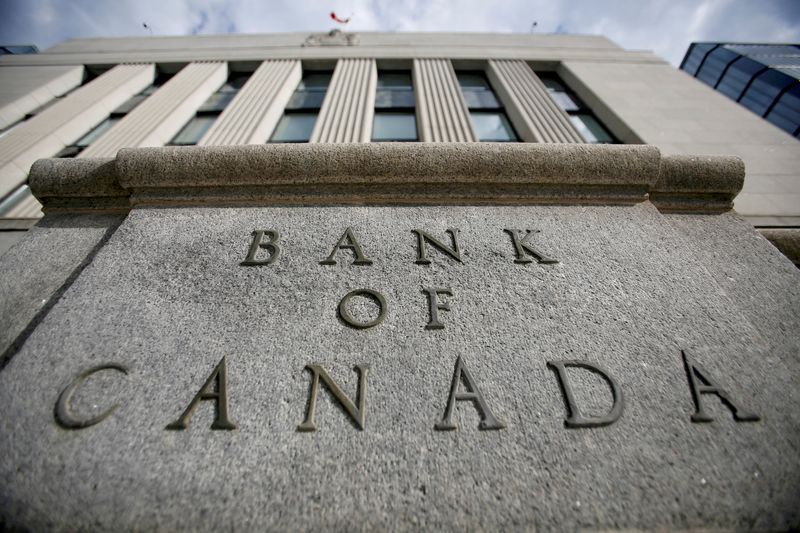Economy
Central bankers, Micron, banking stress tests – what’s moving markets


© Reuters
Investing.com — A number of central bankers point to further rate hikes ahead, apart from BOJ’s Ueda, while chipmakers and the banking sector will be in focus after strong results from Micron and the passing of bank stress tests, Nike ‘s results are also expected, along with weekly jobless claims and the final reading of first quarter GDP.
1. Major central bankers remain hawkish, except Ueda…
The European Central Bank’s annual gathering at Sintra has allowed the leaders of the majority of the world’s senior central banks to affirm their hawkish tendencies, suggesting interest rates will be ‘higher for longer’.
ECB President , acting as host, largely confirmed a July hike, Fed chair mentioned the possibility of consecutive rate increases, while Bank of England boss implied tight monetary conditions would have to stay in place for some time given U.K. inflation remains highly elevated.
The one outlier was Bank of Japan Governor Kazuo Ueda who pointed to his country’s low underlying inflation as sufficient reason for monetary policy to stay very accommodative even as the rest of the world tightens aggressively.
There are a number of inflation releases due as this week comes to a close that could put these views into context.
consumer inflation slowed to below the 2% level targeted by the European Central Bank, rising 1.6% in June from a year ago, but this will provide little assurance with CPI in North Rhine Westphalia, the most populous of the German states, recorded a 6.2% annual rise in June.
The index from the wider euro region is scheduled for Friday, and the underlying pace of price growth in the euro area is expected to have grown again.
Friday also sees the final reading of the U.S. for the first quarter, while reports consumer price data – a leading indicator for Japan’s nationwide figures due later.
2. Micron gains on AI demand, but Chinese worries remain
Micron’s (NASDAQ:) stock rose more than 3% premarket after the U.S. chipmaker reported strong third-quarter after the close Wednesday, powered by demand for its memory chips from the rapidly-growing artificial intelligence sector.
However, the company did point to one major reason for concern, saying up to half of its China market share is at risk due to the ongoing spat between Washington and Beijing over the flow of artificial intelligence chips to China.
And this dispute could be about to become even more heated, as a report by the Wall Street Journal stated that the United States is considering new restrictions on exports of artificial intelligence chips to China.
The Commerce Department will stop the shipments of chips made by U.S. companies, including Micron, to customers in China as early as July, the report said.
3. Futures higher; Nike results due
U.S. futures edged higher Thursday, boosted by strong earnings from chipmaker Micron and the announcement of successful stress tests in the banking sector.
At 05:30 ET (09:30 GMT), the contract had climbed 55 points or 0.2%, rose 6 points or 0.1%, and gained 25 points or 0.2%.
The strong quarterly numbers from Micron and the successful banking tests have helped create a positive sentiment, but gains are likely to be limited as investors digested Federal Reserve Chair Jerome Powell’s latest comments about the tightening cycle.
That said, the main equity averages are on course to record a strong first half of 2023, with the broad-based up 14% this year to date, the tech-heavy has gained nearly 30% – set to post its best first half since 1983 — while the blue-chip is up just 2% this year.
The main corporate release Thursday comes from Nike (NYSE:), with the athletic apparel maker’s quarterly results potentially hit by slowing sales in North America.
4. U.S. banks pass stress tests
The major U.S. banks all passed the Federal Reserve’s annual stress tests, the regulator announced late Wednesday, demonstrating they are able to weather a severe recession.
“Today’s results confirm that the banking system remains strong and resilient,” said Fed Vice Chair for Supervision Michael Barr.
The 23 biggest banks in the country were able to prove that they would remain active, coping with this year’s hypothetical scenario which included 10% unemployment, a 40% plunge in commercial real estate prices, and a surge in the dollar.
It’s important to also remember that only the largest banks are required to take these tests, and the issues earlier this year concerned midsize and regional banks.
“We are very reluctant to say” if the sector’s turmoil is over, Fed chief Powell said Thursday during an event held by the Spanish central bank in Madrid. “Our job is to worry about things.”
That said, investors will now be waiting for the announcements from the major banks about their stock buyback and dividend plans, as these usually follow the passing of these stress tests.
5. U.S. data deluge due
There is a large dump of U.S. economic data to study Thursday, as investors gear up for the next meeting of the towards the end of July.
The weekly are expected to come in at 266,000, virtually unchanged from the previous week’s 264,000, indicating that the U.S. labor market remains relatively stable.
The final reading of the first quarter’s growth is expected to remain unchanged with annualized growth of 1.4%, while are seen growing 0.2% in May.
Still, investors may want to keep their powder dry until the May report on the index, which is the Fed’s favorite gauge of inflation.
Economy
Russian central bank says it needs months to make sure CPI falling before rate cuts -RBC


© Reuters. Russian Central Bank Governor Elvira Nabiullina attends a news conference in Moscow, Russia June 14, 2019. REUTERS/Shamil Zhumatov/File Photo
MOSCOW (Reuters) – Russia’s central bank will need two to three months to make sure that inflation is steadily declining before taking any decision on interest rate cuts, the bank’s governor Elvira Nabiullina told RBC media on Sunday.
The central bank raised its key interest rate by 100 basis points to 16% earlier in December, hiking for the fifth consecutive meeting in response to stubborn inflation, and suggested that its tightening cycle was nearly over.
Nabiullina said it was not yet clear when exactly the regulator would start cutting rates, however.
“We really need to make sure that inflation is steadily decreasing, that these are not one-off factors that can affect the rate of price growth in a particular month,” she said.
Nabiullina said the bank was taking into account a wide range of indicators but primarily those that “characterize the stability of inflation”.
“This will take two or three months or more – it depends on how much the wide range of indicators that characterize sustainable inflation declines,” she said.
The bank will next convene to set its benchmark rate on Feb. 16.
The governor also said the bank should have started monetary policy tightening earlier than in July, when it embarked on the rate-hiking cycle.
Economy
China identifies second set of projects in $140 billion spending plan


© Reuters. FILE PHOTO: Workers walk past an under-construction area with completed office towers in the background, in Shenzhen’s Qianhai new district, Guangdong province, China August 25, 2023. REUTERS/David Kirton/File Photo
SHANGHAI (Reuters) – China’s top planning body said on Saturday it had identified a second batch of public investment projects, including flood control and disaster relief programmes, under a bond issuance and investment plan announced in October to boost the economy.
With the latest tranche, China has now earmarked more than 800 billion yuan of its 1 trillion yuan ($140 billion) in additional government bond issuance in the fourth quarter, as it focuses on fiscal steps to shore up the flagging economy.
The National Development and Reform Commission (NDRC) said in a statement on Saturday it had identified 9,600 projects with planned investment of more than 560 billion yuan.
China’s economy, the world’s second largest, is struggling to regain its footing post-COVID-19 as policymakers grapple with tepid consumer demand, weak exports, falling foreign investment and a deepening real estate crisis.
The 1 trillion yuan in additional bond issuance will widen China’s 2023 budget deficit ratio to around 3.8 percent from 3 percent, the state-run Xinhua news agency has said.
“Construction of the projects will improve China’s flood control system, emergency response mechanism and disaster relief capabilities, and better protect people’s lives and property, so it is very significant,” the NDRC said.
The agency said it will coordinate with other government bodies to make sure that funds are allocated speedily for investment and that high standards of quality are maintained in project construction.
($1 = 7.1315 renminbi)
Economy
Russian central bank says it needs months to make sure CPI falling before rate cuts -RBC


© Reuters. Russian Central Bank Governor Elvira Nabiullina attends a news conference in Moscow, Russia June 14, 2019. REUTERS/Shamil Zhumatov/File Photo
MOSCOW (Reuters) – Russia’s central bank will need two to three months to make sure that inflation is steadily declining before taking any decision on interest rate cuts, the bank’s governor Elvira Nabiullina told RBC media on Sunday.
The central bank raised its key interest rate by 100 basis points to 16% earlier in December, hiking for the fifth consecutive meeting in response to stubborn inflation, and suggested that its tightening cycle was nearly over.
Nabiullina said it was not yet clear when exactly the regulator would start cutting rates, however.
“We really need to make sure that inflation is steadily decreasing, that these are not one-off factors that can affect the rate of price growth in a particular month,” she said.
Nabiullina said the bank was taking into account a wide range of indicators but primarily those that “characterize the stability of inflation”.
“This will take two or three months or more – it depends on how much the wide range of indicators that characterize sustainable inflation declines,” she said.
The bank will next convene to set its benchmark rate on Feb. 16.
The governor also said the bank should have started monetary policy tightening earlier than in July, when it embarked on the rate-hiking cycle.

 Forex3 years ago
Forex3 years agoForex Today: the dollar is gaining strength amid gloomy sentiment at the start of the Fed’s week

 Forex3 years ago
Forex3 years agoUnbiased review of Pocket Option broker

 Forex3 years ago
Forex3 years agoDollar to pound sterling exchange rate today: Pound plummeted to its lowest since 1985

 Forex3 years ago
Forex3 years agoHow is the Australian dollar doing today?

 Cryptocurrency3 years ago
Cryptocurrency3 years agoWhat happened in the crypto market – current events today

 World3 years ago
World3 years agoWhy are modern video games an art form?

 Commodities3 years ago
Commodities3 years agoCopper continues to fall in price on expectations of lower demand in China

 Economy3 years ago
Economy3 years agoCrude oil tankers double in price due to EU anti-Russian sanctions





















